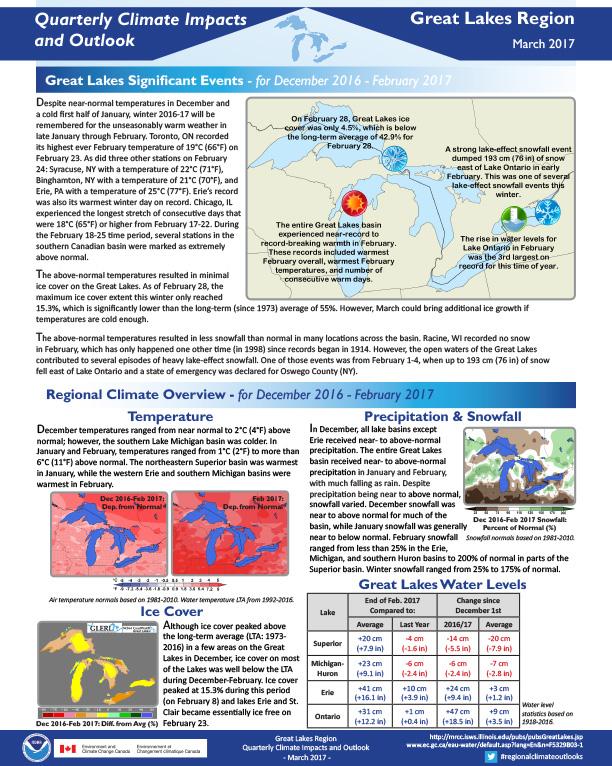Quarterly Climate Impacts and Outlook for the Great Lakes Region - March 2017
Quarterly Climate Impacts and Outlook for the Great Lakes Region for December 2016 – February 2017. Dated March 2017.
Despite near-normal temperatures in December and a cold first half of January, winter 2016-17 will be remembered for the unseasonably warm weather in late January through February. Toronto, ON recorded its highest ever February temperature of 19°C (66°F) on February 23. As did three other stations on February 24: Syracuse, NY with a temperature of 22°C (71°F), Binghamton, NY with a temperature of 21°C (70°F), and Erie, PA with a temperature of 25°C (77°F). Erie’s record was also its warmest winter day on record. Chicago, IL experienced the longest stretch of consecutive days that were 18°C (65°F) or higher from February 17-22. During the February 18-25 time period, several stations in the southern Canadian basin were marked as extremely above normal.
NOAA’s Regional Climate Services Program created these Climate Outlooks to inform the public about recent climate impacts within their respective regions. Each regional report contains easy-to-understand language, and anyone can access them through the Drought Portal at https://www.drought.gov/drought/resources/reports.


